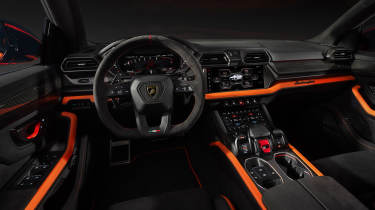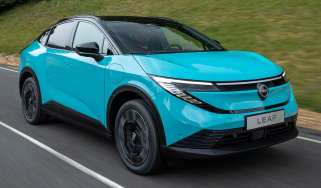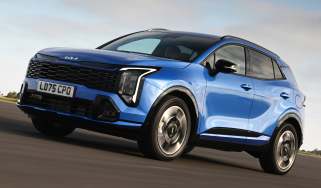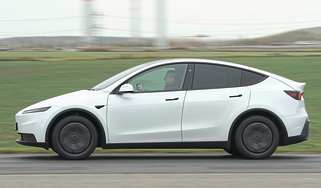New Lamborghini Urus facelift gets massive power hike
Lamborghini’s popular Urus super SUV now packs 788bhp of hybrid-assisted V8 grunt
A substantially updated Lamborghini Urus has been revealed, featuring a new plug-in hybrid V8 powertrain and a raft of other changes inside and out.
The Urus has been a phenomenal success for the brand, selling more units in its lifetime than all of Lamborghini’s supercars put together. But with pressure from rivals and increasingly stringent emissions regulations coming into force, the new SE model has turned to hybrid assistance to reach some lofty new heights.
The crux of those changes is under the bonnet, as the new Urus features a 788bhp hybrid powertrain that pairs a familiar 4.0-litre twin-turbo V8 with an electric motor and battery pack. Combined, they make 131bhp more power than the previous Urus S and Urus Performante cars.
On its own the V8 isn’t quite as powerful as before, producing 611bhp, but it’s paired with a 189bhp electric motor that doesn’t only add to the total figures, but can also pump in bits of power and torque to fill in the V8’s torque gaps. It’s a similar set-up to the one you’ll find in the Porsche Cayenne Turbo E-Hybrid – albeit with a little more power – and uses the same 25.9kWh battery.
In a very un-Lamborghini fashion, the new Urus SE will be able to run in a full electric mode for up to 40 miles on a charge, after which the powertrain will run in a hybrid mode blending the two power sources as it sees fit. Beyond this, there’s also a range of driver modes, including a full-bore performance mode for the powertrain.
There is a weight penalty to these hybrid elements, and while Lambo hasn’t yet given us homologated figures, we expect it to weigh somewhere around 2.5 tonnes. Against the clock, however, it’s still quicker than the old Urus S to 62mph, hitting the benchmark sprint in 3.4 seconds. The old Performante is still quicker by a tenth, although that’s probably due to the old car’s extreme track-focused Pirelli Trofeo R rubber, which is not an option on this model.
The SE’s power is sent to all four wheels via an eight-speed automatic transmission, which also houses that electric motor. The batteries, meanwhile, live partially under the rear seats next to a downsized petrol tank. The centre differential is new, and is now capable of sending up to 100-per cent of power to the rear wheels, with a further locking differential mounted on the rear axle.
In terms of suspension, the Urus runs an air spring system with up to 90mm of height variation between its highest and lowest settings. There’s also the usual active anti-roll system and rear-wheel steering, but a fully active system such as you’ll see on a Ferrari Purosangue isn’t on the cards.
Lamborghini will offer a range of wheel sizes between 21 and 23-inches, with the largest being a new design for this car. Behind them sit a set of standard-fit 440mm carbon-ceramic brakes on the front axle with 10-piston calipers. These are still the largest set of brakes used on any production car on sale, only now they are paired with a further regenerative braking function within the hybrid system.
Lamborghini has also been working on the exterior and interior design, with cleaner and slightly more resolved detailing. At the front there’s a new bonnet that now reaches further down the car to avoid a shutline between the metal and the lower bumper. Furthermore, there are new headlights designed to emulate the new Revuelto.
The rear end has seen the number plate moved to the lower bumper, and a new tailgate fitted that’s been reshaped with inspiration from the full-width honeycomb design element seen on the Gallardo LP550-4.
Inside, Lamborghini has revamped the dashboard to incorporate a larger 12.3-inch touchscreen display, while also introducing physical toggle-style controls. Below, there’s a further touchscreen that you might recognise from various Audi models; the changes, while subtle, do make the Urus’s cabin feel more modern.
Yet while the Urus SE does hit some pretty incredible numbers, it has a much more crowded segment to compete in with new rivals from Aston Martin and Ferrari. Despite its challenges, the updated Lambo’s popularity is unlikely to be any less impressive than it is now.
Click here for our list of the fastest SUVs in the world...
Find a car with the experts










